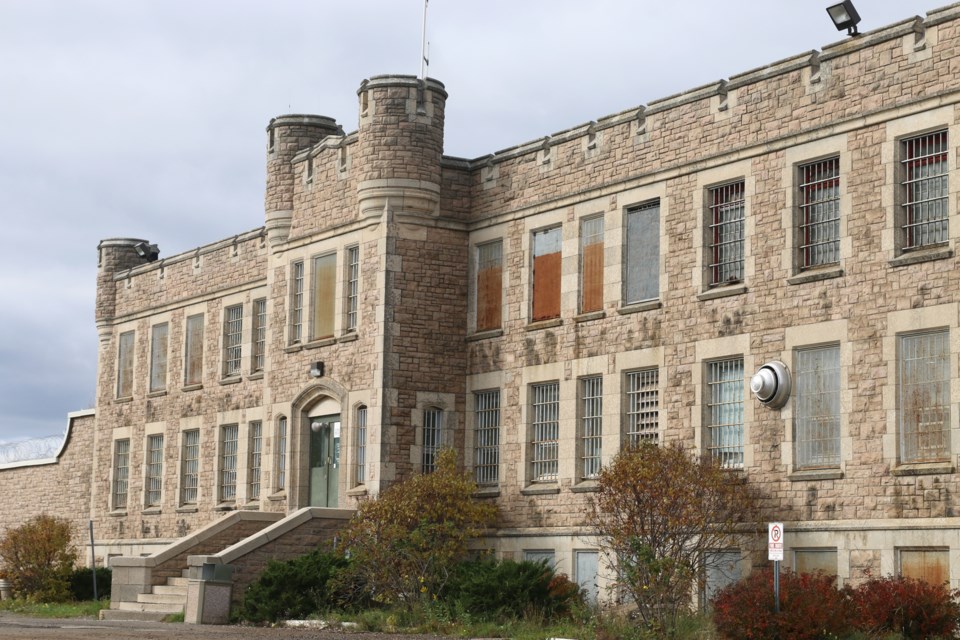THUNDER BAY – Following a riot, an escape, multiple in-custody deaths and years of calls for a new correctional facility, Ontario has finally committed to build a replacement to the Thunder Bay District Jail.
The provincial government announced Thursday funding has been approved for a 325-bed correctional facility that will replace the Thunder Bay District Jail and Thunder Bay Correctional Centre.
Thunder Bay-Atikokan MPP Bill Mauro said the replacement of the nearly century-old jail has been a major priority for both himself and Thunder Bay-Superior North MPP Michael Gravelle.
“The need is obvious. The challenge is, when it comes to infrastructure, there’s always more need than resource,” Mauro said. “Even though there’s a need there, it didn’t mean it was a slam dunk.”
Less than a week ago, Mauro said the lack of mention in the provincial budget for a new jail was not an indication the province had ruled out a new facility. The announcement on Thursday did not provide any specifics on location, capital cost or timelines for construction for the new jail.
Ontario Public Service Employees Union Local 708 president Shawn Bradshaw, who represents correctional officers at the Thunder Bay Correctional Centre, said a new facility could represent a major change in how inmates are treated while in custody.
“They’re going to have the ability to have a lot of their rights that they’ve been pretty much denied based on our staffing models and antiquated facilities we’re working in,” Bradshaw said.
“They’re entitled to 20-minute minimum of fresh air a day. Just sometimes because of safety issues at the jail or staffing levels they haven’t been able to have that. They haven’t had the opportunities to get outside. Visits are getting cancelled, programming is getting cancelled just because we don’t’ have the staffing levels and the jail doesn’t have an appropriate space to provide any programming.”
The announcement of the funding approval comes on the same day of the release of an interim report by Independent Advisor on Corrections Reform Howard Sapers on the use of segregation throughout the provincial correctional system. Included in the report is the recommendation of the construction of a replacement to the Thunder Bay District Jail, to be operational within three to five years.
The report was commissioned late last year, after it was revealed by Ontario Human Rights Commissioner Renu Mandhane that inmate Adam Capay had spent more than 1,500 days in segregation at the Thunder Bay District Jail. Capay, who was charged with first degree murder after a homicide at the Thunder Bay Correctional Centre, was detained in a Plexiglass-lined cell in a windowless unit that had 24-hour artificial light since arriving at the district jail in June 2012.
The report found Capay was one of five inmates in Ontario who had been continuously confined for more than the past three years. The average length of segregation in the jail last year was 18 days, while the median duration was five days, both above the provincial averages.
The review also examined the state of correctional infrastructure across the province. The Thunder Bay District Jail, which opened in 1928, is the fifth-oldest in Ontario and had an operating capacity of 120 inmates as of Jan. 24, 2017. The Thunder Bay Correctional Centre opened in 1965 and has an operating capacity of 124.
The proposed new correctional centre would have capacity for about 80 more inmates.
But Bradshaw said that might not be enough if the new Thunder Bay institution ends up playing a larger role in serving Northwestern Ontario.
“It’s much like the regional hospital where it (could) become a hub,” Bradshaw said.
“They built it based on what we need and then all of the sudden everybody is coming from all around. That’s really what I see happening with Kenora being so over capacity, I see us taking a lot of their remands and the Fort (Frances) jail is frequently running at or above capacity.”
The Thunder Bay District Jail, in particular, has had a number of high-profile incidents which have prompted calls for a new facility.
The jail was the scene of a riot in December 2015 that led to a correctional officer being taken hostage for about 12 hours. The officer and three inmates were taken to hospital as a result of the disturbance, which was said to have involved about 70 inmates.
Following the riot, a number of politicians and union leaders have toured the jail including OPSEU president Smokey Thomas and NDP critic Jennifer French who were outspoken about the conditions they witnessed.
Last October a 48-year-old inmate escaped from the facility through a service entrance, a jailbreak correctional officers said would have been easily preventable with improved infrastructure.
As well, two coroner’s inquests conducted in 2016 into the deaths of inmates at the jail resulted in recommendations calling on the Ministry of Community Safety and Correctional Services to build a new facility.
Most recently, less than three months ago 56-year-old Moses Beaver was found unresponsive in his cell and was pronounced dead at the Thunder Bay Regional Health Sciences Centre.
According to the release, a community advisory board will also be established in Thunder Bay, which will have board members acting as independent observers that provide perspective on the care, supervision and programs for inmates.
Community Safety and Correctional Services Minister Marie-France Lalonde also on Thursday announced a new 725-bed correctional facility will be built in Ottawa.
The full report from Sapers is expected to be completed in August. In the meantime, he had sharp criticism for the provincial correctional system.
"I expected to find a system that, while not problem free, was generally well-managed, adequately staffed and resourced and supported by modern information technology and management capacity and practice," Sapers wrote. "What I found was a thinned-out and overstretched workforce, the work of corrections being carried out in the shadow of strained labour relations and the legacy of ideological, not evidence-based, decisions about infrastructure, program design and service delivery."
